Almost every Westerner who has ever read anything about Japan has probably come across Professor Donald Keene’s name at some point in time.
The 83-year-old professor has published around 40 books in English on Japanese topics, including both studies of Japanese literature and culture and translations of Japanese classical and modern literature. His award-winning title, Anthology of Japanese Literature, celebrates its 50th anniversary this year, having been in print for five decades.
Keene has also published more than 50 books in Japanese, although some of these titles are translated from English. The ongoing popularity of Japanese author Yukio Mishima can arguably be traced back to his original translation, which stands alone as one of the finest pieces of literature to be produced in the 20th century.
And if that wasn’t enough, the noted Japanologist’s views of traditional and contemporary Japan have been quoted in numerous newspaper clippings, magazine articles, academic papers and essays. So ubiquitous are his thoughts on this East Asian nation in print that chances are you have probably read something by him without even realizing it.
The scholar’s tireless efforts in the field of literature have reaped him much critical acclaim. He was awarded the Order of the Rising Sun (Second Class) by the Japanese government in 1993 and was deemed a Person of Cultural Merit (Bunka Koro-sha), one of the country’s highest honors, in 2002. That same year, his biography of the Meiji Emperor won the Mainichi Shuppan Culture Prize and a year later he was honored with the PEN/Manheim Medal for Translation, which is bestowed on a translator “whose career has demonstrated a commitment to excellence through the body of his or her work.” You couldn’t find a more worthy recipient if you tried.
Born in New York on June 18, 1922, Keene received a bachelor’s degree from Columbia University in 1942. His interest in Japan began at a time when students were not interested in anything but Western civilization.
“When I was a student in New York, we studied history but it meant Europe only,” he says. “We also learnt about the United States, but nothing about the rest of the world. Now kids read about other civilizations, too. I am happy that culture is not just European anymore.”
Although Keene would probably quaff at such a suggestion himself, the professor has over the years played a significant role in this shift in emphasis. His observations on Japanese culture and society allowed people in the US to get a look at the country from an insider’s perspective.
He realized fairly early on in life that language was absolutely crucial to understanding the culture of the people who spoke it. An excursion to France in 1931 helped to add fuel to the fire.
“When I was nine years old, my father took me to Europe,” he recalls. “I discovered there that I couldn’t communicate with children of my age, and this made me want to learn foreign languages, especially French. After we got back to New York, I asked my father to hire a tutor to teach me French, but he said he couldn’t afford it. I didn’t begin studying French until I was 12, when I was in junior high school.”
This might sound late to many, especially in Japan, where nowadays the trend is to teach Japanese children English as early as possible, often simultaneously with their mother tongue.
“I envy people who grow up speaking two or more languages. Some say that this may lead to a split personality but from my point of view it would have been a blessing,” he says. “The more languages one knows, the more interesting life is.”
One can’t argue with him there. His own life reads a little like an adventure novel.
“I started studying Spanish when I was 14,” he recalls. “My father was in business in Spain. We were going to move there but in the summer of 1936 the Spanish Civil War broke out and we ended up staying in New York. I continued with French and Spanish and at 16 I graduated high school and entered Columbia University on a scholarship. I was still under the influence of my high-school teacher who recommended me to read literature in its original language so she wanted me to learn Classical Greek, Latin and German. But at Columbia, I could only take two foreign languages in my first year so I didn’t begin German until I was in my senior year and, although I studied it again years later, I never really got a good grasp of the language.”
In January of 1942, at age 19, Keene graduated from Columbia University and enlisted in the navy.
“I studied Chinese at Columbia and added Japanese at the US Navy Japanese Language School at the University of California,” he says. “There I discovered I had a special affinity for the Japanese language. After the war ended I spent some months in China, and then was qualified to leave the Navy. On my way back to America, I managed to get in a week in Japan. Most of the other translators went back to whatever they were doing before the war broke out, but I liked Japanese too much to give it up. I didn’t want to go back to French and Spanish. There were already a great many PhD theses devoted to Racine or to such subjects as “The Reputation of Chaucer in Spain.” Japanese was more intriguing.”
Hoping to become a scholar of Japanese, Keene returned to Columbia University for graduate studies and PhD work and, after doing a stint of teaching Japanese at Cambridge University, he came to Kyoto in 1953 and stayed for two years to compile the first of his two anthologies of Japanese literature.
He says there is an intricate relationship between language and culture that ties the two disciplines together.
“Language reflects the customs of people and their culture,” he says. “When one learns Japanese, one is surprised by the different levels of politeness which is so special to Japanese. There is almost nothing like a neutral statement. You must always indicate your feelings towards the person you are talking to, to show the difference in social status. Sometimes you are too polite or not polite enough. In English we use the same verb ‘to be’ or ‘eat’ for a dirty dog on the street and a god, but in Japanese the verbs are completely different. So you see that there is certain vagueness in the Japanese language – they love blurry outlines.”
In 1955, he became a professor at Columbia University but each year he has been spending his holidays researching and writing in Japan.
“In the beginning I came for three months or so but that was just not long enough for all the work,” he recalls. “So from 1980 till my retirement in 1992, Columbia allowed me to teach half a year, which is four months, so I could spend eight in Japan.”
He is still teaching a one-semester course at Columbia (this year on Basho) and lives most of the year in Tokyo.
“I am like a Japanese person in a sense but that doesn’t mean I know every kanji character or word,” he says. “Japanese is not one language.”
The professor believes children in Japan today know a lot less about traditional Japanese culture than their parents did.
“This trend is true all over the world but particularly acute here,” he says. “If the emphasis is on English, they will lose Japanese – it is inevitable. Children should have a strong foundation in their own language and culture but sadly here the direction is not towards gaining a good understanding of Japanese history, philosophy and literature. The Japanese should be proud of their wonderful literature and theater. When kabuki first went to the US in the sixties, members of the Diet said that no play should be shown if it contained feudal ideas or women of the licensed quarters. This eliminated almost the entire kabuki repertoire. I hope that today Japanese realize how silly this idea is.”
Keene advocates a more active promotion of Japanese culture because he thinks it can enhance people’s lives all over the globe.
“The Japanese should recognize how attractive their culture is, but instead they always worry that it is so special and strange that no foreigner can understand it,” he says. “We do, many of us.”
The huge variety of events and lectures at the Donald Keene Center of Japanese Culture at Columbia University, opened in 1986 and named in his honor, is proof that he is right.
“We have lectures and exhibitions on both classic and contemporary topics and the interest is immense,” he says. “We have full houses for the lectures, many of which are given in Japanese.”
Keene has been working relentlessly since the 1950s at publicizing Japanese culture abroad.
“The Japanese are great at many things but they are very weak at self-promotion,” he says. “I think the Japanese government should copy the French who are masters of self-promotion. The reason people love French culture is because the French government spends a great deal of money promoting an understanding of French culture.”
The professor is doing his part and his latest book, due out in the US on May 5, is an investigation into the life of Watanabe Kazan, the famous portrait painter.
Keene loves the Japanese artistic sensitivity and recommends artworks as an easy access point into the depth of Japanese culture.
“If you go to any department store, visit the section where they sell pottery and things made of wood or bamboo,” he says. “The artistry of the Japanese is astonishing, the number of things they do beautifully and also the number of people who make a good living in this country as potters, painters, artists, is a lot more than anywhere else. These artisans can survive and thrive because the average Japanese has a heightened sensitivity to beauty and is willing to spend lots of money on these artistic items to support the artists.”
He believes this strong aesthetic sense can also be acquired through language.
“Read a Japanese letter and the first part is always about the seasons, the pretty autumn leaves or the cool wind blowing,” he says. “They love nature and want to share its wonders with others. Everyone in the world likes a pretty flower but the Japanese carry it to another level: they have an emotional reaction to beauty. Learning Japanese will help you get this.”
Keene discovered many more aspects of himself through his study of linguistics.
“Once you speak another language, you realize new things inside yourself that you didn’t express before,” he says. “These are the things that come out better in another language. For example, for me the word sabishii is like that because I know exactly what sabishii is but I don’t know how to say it in English. I could say lonely but it doesn’t give the full quality of sabishii.
“Another is arigatai, which means to be grateful for, but it has so many other ways of use. Mottainai is also very difficult, since it can mean something quite wonderful or too good for you, so the meanings are contradictory depending on the context. I experienced this when I worked on Tsure zure gusa, a 14th-century book of essays, which I translated as Essays in Idleness. The book is beautifully written but he uses the same adjective over and over again, one that doesn’t exist in modern Japanese, imijiki, and each time it appears, the translator must decide what the right meaning is in a particular sentence. It can mean wonderful, frightening or terrible, so a translation machine could not manage such an assignment.”
Even with modern texts he has encountered similar problems.
“I was translating a novel by Yukio Mishima that includes a scene that takes place in a fashionable restaurant and the proprietress is very careful as to how she talks to her customers,” he says. “She only teases the very successful ones who do not mind such jokes. Mishima said that she made a ‘burei na’ joke, teasing the man. I knew that burei meant impolite, rude and so on, but I could not find the English word I wanted. A month later, when I was at Angkor Wat and stood before the magnificent architecture I found my word. It was ‘uncomplimentary’. Luckily I was still able to include it in the translation of the book.”
Keene said he would rather see Japanese children these days reading Saikaku, despite the risque stories, instead of the manga that is widely available. At the end of the day, however, he remains hopeful the future is not all bleak for the youth of Japan.
“Most people who love literature will come to it naturally even if they are not encouraged,” he says. “But learn and do as much as possible while you can because as one grows older, it is harder to remember things.”
Interviewed by Judit Kawaguchi
From J SELECT Magazine, March 2006



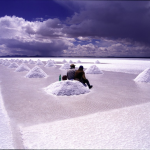

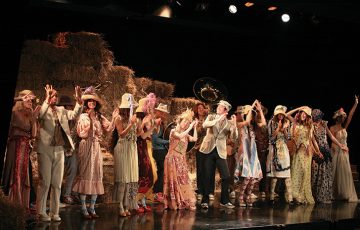
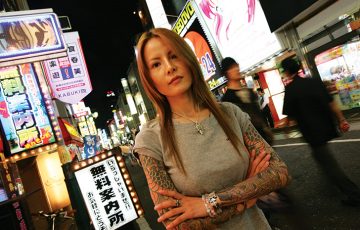
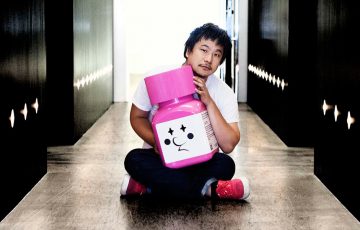
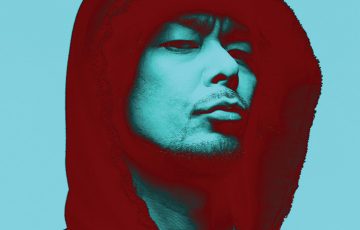






Recent Comments